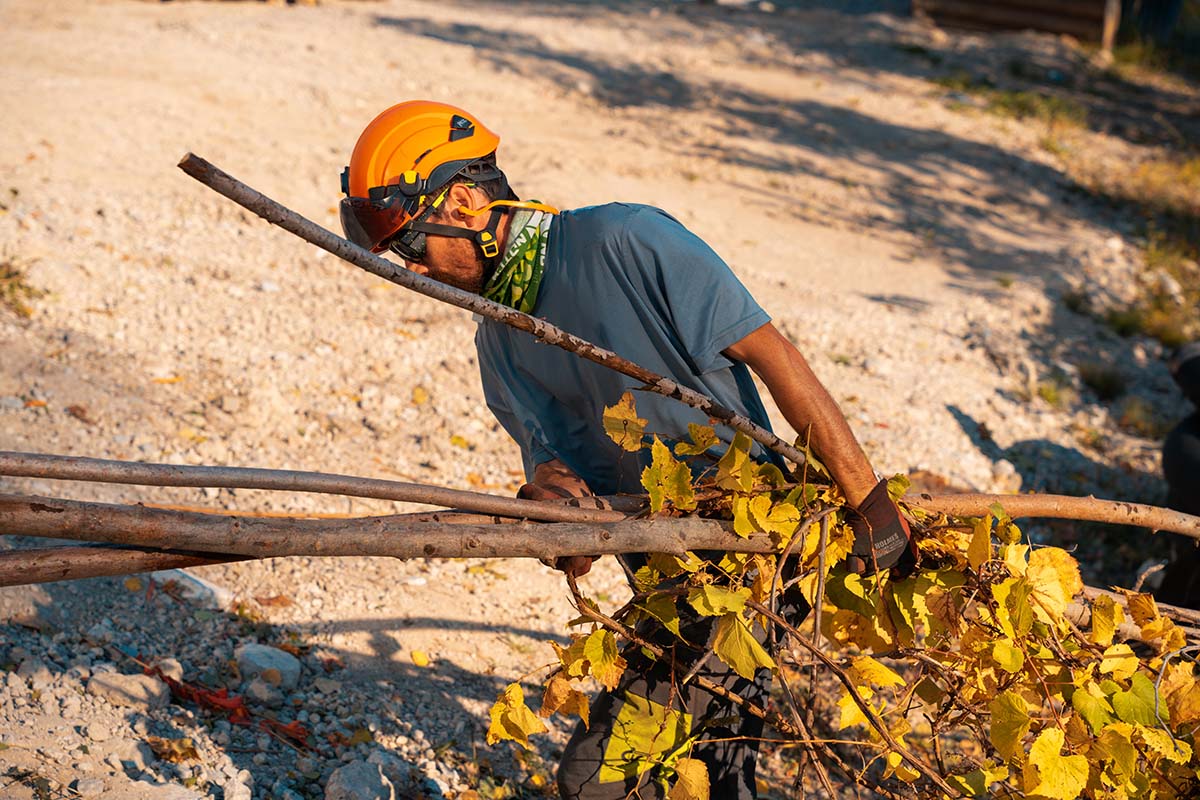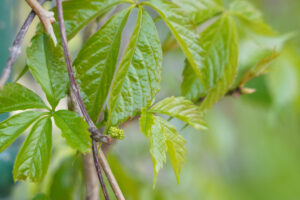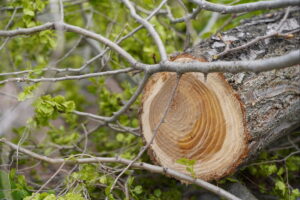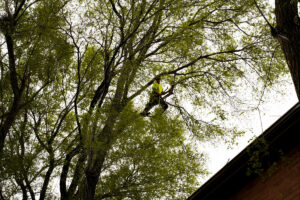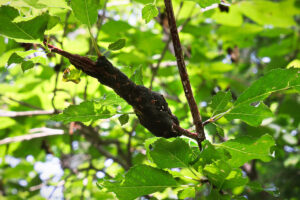When we think of trees and Fall, most of us think about them losing their leaves. Our arborists also think of it as a great time for tree pruning and trimming those extra branches. We’ll explain how fall is an excellent time of year to prune your trees, why it’s beneficial, and how it enhances your landscape and curb appeal.
Why Pruning is a Great Time in Fall
You should always have hazardous, damaged, or diseased branches pruned as soon as possible. Furthermore, professional arborists can provide general pruning in any season, including the fall. However, late fall is the ideal time to do this, and pruning in early fall could give your tree a more difficult winter. Unlike spring and summer, when your tree is thriving and awake, it is becoming dormant in the fall for its winter nap. During this time, trees conserve their nutrients. This is why they shed their leaves. Keeping them green would cost too much for the tree to maintain through winter.
That conservation process presents a problem for pruning in early fall. Pruning typically motivates new growth in a tree. That’s normally ideal, but trees are working to conserve their energy in the autumn. If they need to create new growth, trees will start spending those reserves they should be saving. That’s why fall pruning should come after a tree has lost most of its leaves. A fully shed tree has begun its dormancy and isn’t at risk of trying to create new growth. This is also why winter is a great time to prune trees. While dormant, the trees lose damaged or unaesthetic branches. Then, they wake up in spring and have the sun and warmth they need to start those new post-pruning growths.
The Benefits of Tree Pruning
Tree pruning is one of the staples of tree care. There are multiple benefits to certified arborists regularly pruning your trees throughout the year.
- Curb Appeal: Pruning simply enhances a tree and makes it more beautiful and verdant. By cutting and trimming back select branches, the tree will foster new growth, filling those areas with more leaves. Arborists understand how different trees each grow and respond to pruning. That means they know exactly where to cut for the most curb appeal.
- The Tree’s Health: Over time, trees get damaged, or a part gets sick. A strong wind, a ball, a kite, or anything else might break a branch. That can expose the tree to pests or diseases. Pruning off these branches prevents either from spreading throughout the tree for more serious damage.
- Prevent Hazards: Certain branches might present immediate or future hazards. An arborist can identify and remove these branches during pruning, preventing serious damage to the tree.
The Appeal of Fall Pruning
While pruning is already generally beneficial, there are a few reasons why late fall pruning is a good option.
The Full Picture
Fall, named for the “fall of the leaf” is a great time to prune precisely for that reason. With the leaves off the tree, it is easier for professional arborists to see the full tree structure in detail. This allows them to easily spot any damaged or diseased branches that might be obscured by the tree’s foliage in spring and summer.
A Beautiful Tree in the Spring
Since the tree is dormant, this also means pruning will cause less stress for the tree. The cuts from pruning cause a stress response in a tree, which results in new growth. That’s why professional pruning makes a tree more beautiful. However, that leads to an awkward transition phase where the tree has exposed branches. It needs time to bounce back. During dormancy in late fall and winter, the tree doesn’t immediately respond. That’s perfect for a time of year when trees are expected to be “naked”. Instead, the tree will wake up in spring, immediately ready to grow those branches and leaves.
Safer from Disease
Spring and summer are great seasons for plants but also optimal times for tree pests and diseases. As a result, pruning in the warmer seasons has a higher risk of exposing a tree to either. While professional arborists know how to mitigate such risks, this makes pruning in the cooler seasons a greater option. These pests and bacteria also go dormant or die in the fall and winter, so they can’t attack the tree after pruning.
Preventing Further or More Serious Damage
Winter weather can be severe. If a tree has damaged or diseased branches, these become hazardous with snow, freezing rain, and high winds. Fall pruning is perfect for removing those branches before they become a more serious problem to the tree or anything in its surroundings.
Don’t Let Autumn Pruning Fall By
Now you know why late fall is a great time for a certified arborist to prune and trim your trees and increase your curb appeal. Fall pruning allows for a full prune without needing to sacrifice curb appeal in the other seasons. Remember, fall is a great time for pruning, but you should have certified arborists prune your trees when it’s necessary for your tree’s health, no matter the season. If you want to learn more about or want to schedule a tree pruning, contact us at Advanced Tree Care.

